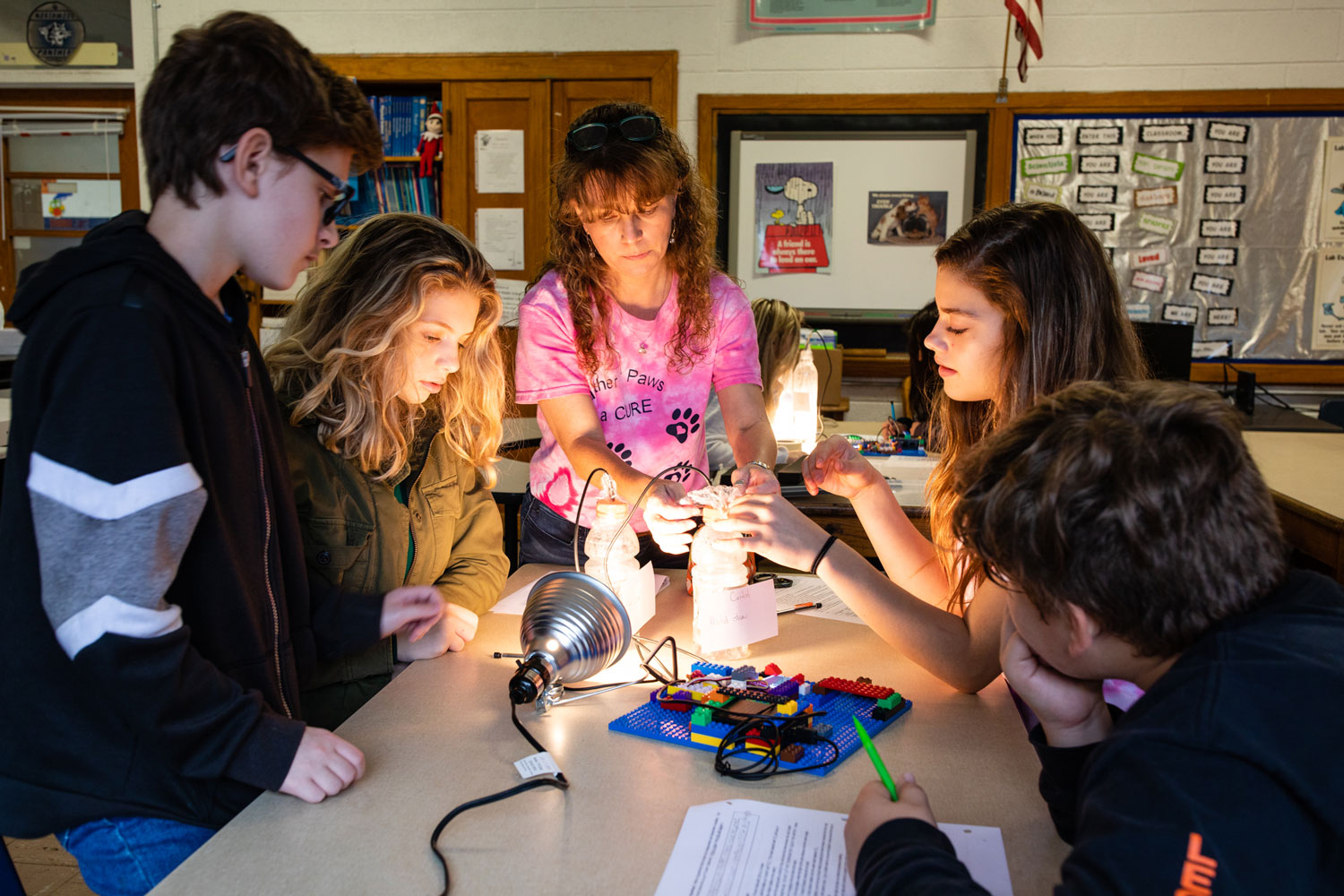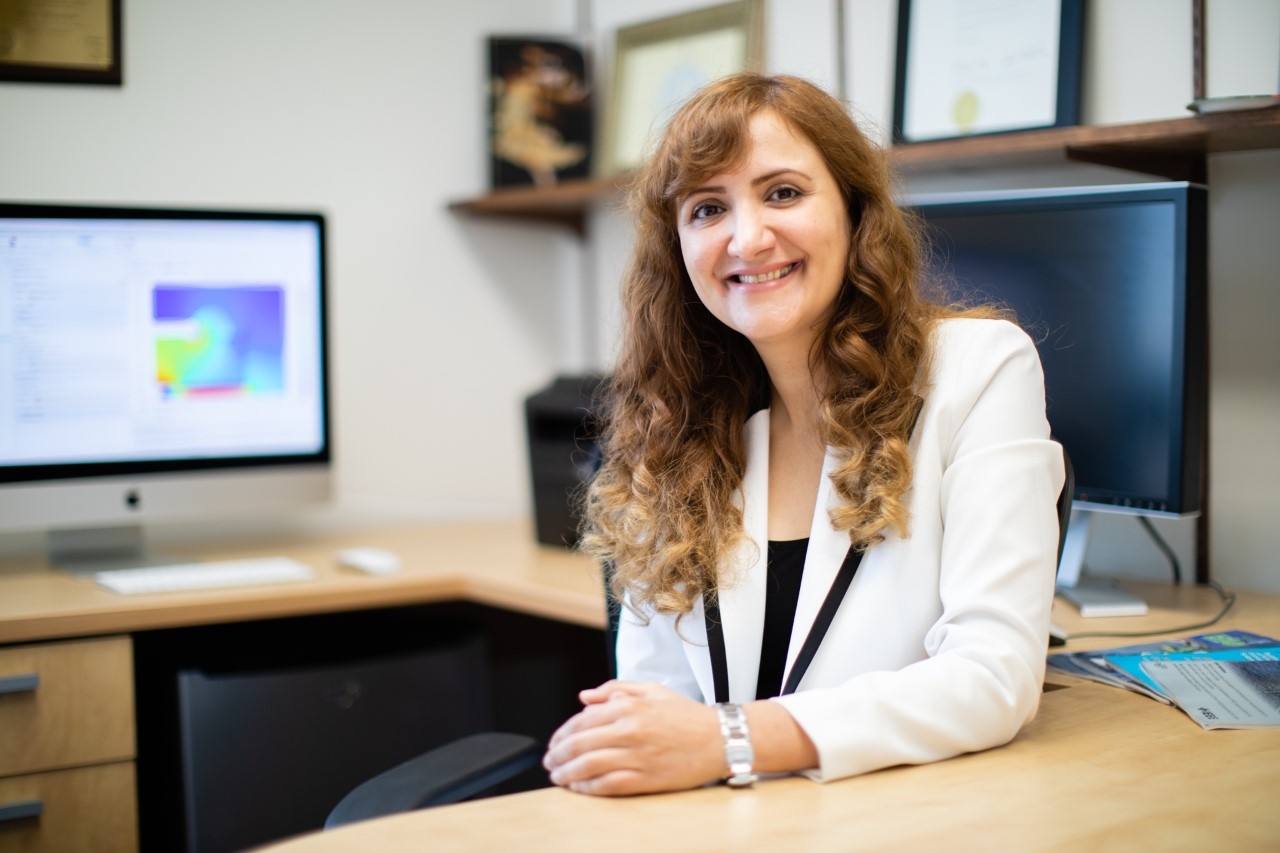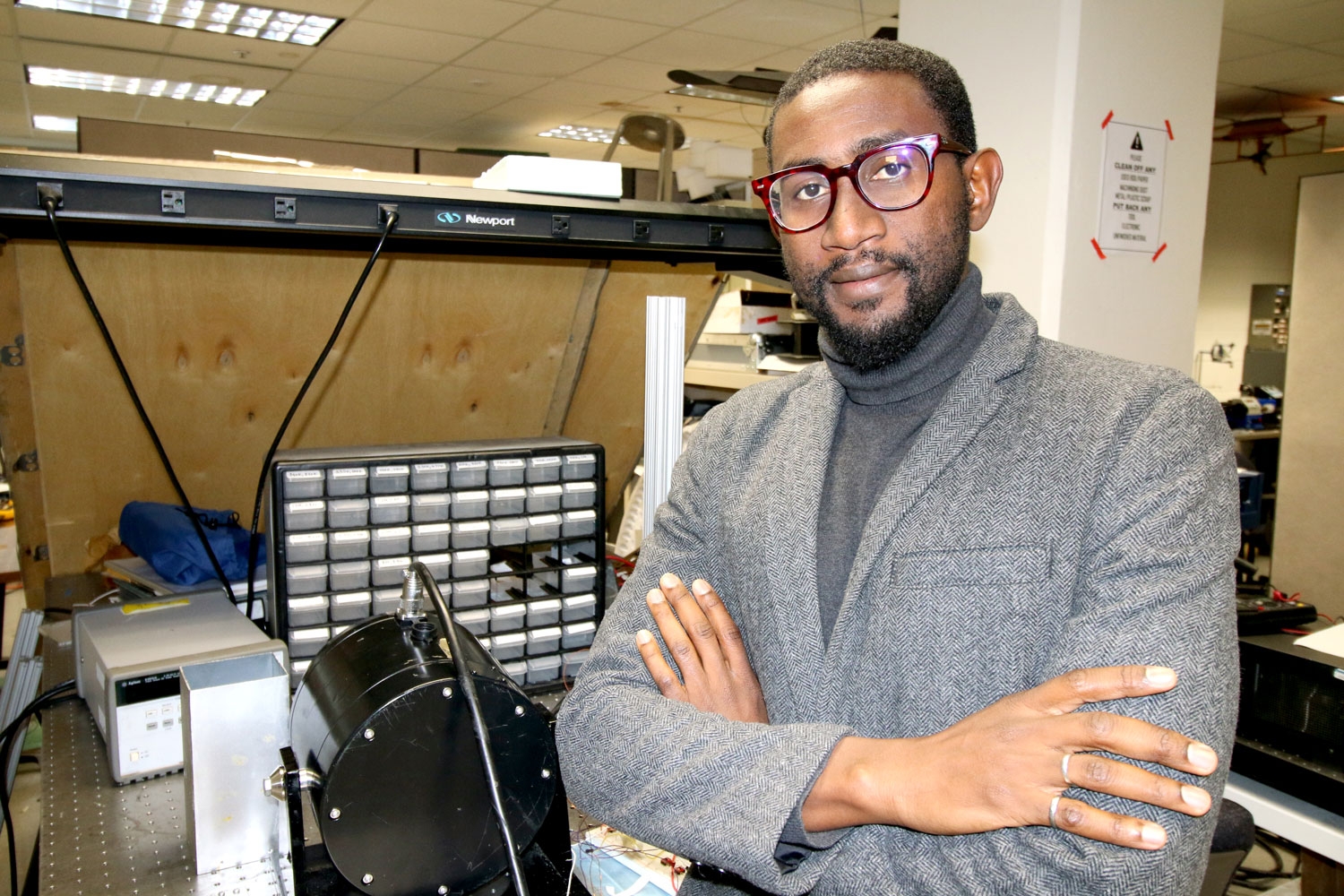Early career faculty earn 14 National Science Foundation CAREER awards

For the 2020 fiscal year, 14 Virginia Tech early career scientists and engineers were granted National Science Foundation Early Career Development Awards (CAREER) awards, totaling more than $4 million in research funding for projects ranging from examining support structures for Black and Latinx students to improving performance growth of cyberinfrastructure systems.
Over the past 25 years, Virginia Tech researchers have earned 171 CAREER awards.
The award is considered one of the most competitive and prestigious for faculty in the first stages of their careers who have the potential to serve as academic role models in research and education and to lead advances in the mission of their department or organization.
“I congratulate our award winners and am pleased to have a large group of early career researchers that have the potential to make a profound impact in their fields and on humanity,” said Don Taylor, interim vice president for the Office of Research and Innovation. “Investment in emerging leaders helps to build research platforms upon which they can pursue innovative ideas and build upon for years or even decades.”
The recipients reflect a broad cross-section of Virginia Tech’s multidisciplinary research portfolio that include fluid dynamics, biological sciences, autonomous robotics, biomaterials, bioinspired engineering, power systems, engineering education, diversity, condensed matter and matter theory, and environmental engineering. The 14 awardees and their projects are:

Xianming David Bai, assistant professor of materials science and engineering, College of Engineering
Defect Energetics and Dynamics in Concentrated Alloys
Metallic alloys are widely used as structural materials in many practical applications, such as bridges, power plants, buildings, aircrafts, and automobiles. Conventional alloys are typically made of one principal alloying element with addition of other low-concentration alloying elements for improving alloy properties. These concentrated alloys exhibit outstanding physical properties compared to conventional alloys, including high-temperature strength, corrosion resistance, radiation tolerance, and fatigue resistance. The formation and transport of material defects in the concentrated alloys, which govern many of their physical properties, are still not well understood. Bai’s goal is to use novel computational approaches to narrow this knowledge gap and study the effects of alloy composition, atomic configuration of alloying elements, interaction between alloying elements on the defect formation, and transport mechanisms in concentrated alloys.
Oumar Barry, assistant professor of mechanical engineering, College of Engineering
Towards a Self-Powered Autonomous Robot for Intelligent Power Lines Vibration Control and Monitoring
Normally, power lines are fitted with passive vibration absorbers that are often ineffective because of their narrow frequency bandwidth. They contribute to fatigue damage in cable strands, which can eventually result in line failure. Barry’s project proposes a multifunctional self-powered autonomous robot for intelligent vibration control and monitoring of power lines. Barry believes that the research necessary to build the robot will provide fundamental breakthroughs at the interface of energy harvesting, fluid-structure interactions, and vibration control. To learn more, read the full story.

Ed Barnes, assistant professor of physics, College of Science
Non-equilibrium Many-Body Dynamics in Topological Quantum Materials
With his CAREER award, Barnes will create mathematical models that will help scientists understand how electrical currents flow in special compounds that possess an exotic property known as topology. One class of these compounds, known as transition metal dichalcogenides, can form amazingly thin sheets only one-atom thick. Barnes will also look at two other types of topological materials, known as topological insulators and Weyl semimetals, the latter named after German mathematician and theoretical physicist Hermann Weyl. To learn more, read the full story.

Shengfeng Cheng, assistant professor of physics, College of Science
Nonequilibrium Physics in Drying Soft Matter Solutions
Paint is an example of a soft matter solution.The drying process of this soft matter solution provides a way to fabricate materials and a way to investigate physics in systems out of equilibrium. With the award, Cheng will use computer simulation techniques and simple physical models to explain the collective behavior of particles intrinsic to the evaporation processes of particle suspensions, polymer solutions, and their mixtures. He will also map out the optimized drying conditions under which the materials have desired structures. The findings will be used to guide the design of new solvent evaporation processes for more efficient material fabrication.

Xi Chen, assistant professor of industrial and systems engineering, College of Engineering
Model-Free Input Screening and Sensitivity Analysis in Simulation Metamodeling
Simulation is a widely used method to model stochastic systems, but analysis of these models becomes computationally and statistically difficult when the models involve a large number of potential input parameters. In order to improve model tractability, it becomes important to identify a subset of significant input parameters and then to design effective simulation experiments using these input parameters. With this award, Chen will work to provide new input screening and sensitivity analysis techniques for improving the decision-making capability within performance and schedule requirements in large-scale, complex systems applications. Long-term, Chen’s research will contribute to national health and prosperity by improving modeling and analysis using large-scale simulations.

Mona Ghassemi, assistant professor in the Bradley Department of Electrical and Computer Engineering, College of Engineering
Accelerated Insulation Aging due to Fast, Repetitive Voltage Pulses from Wide Bandgap Power Electronics
With an increasing need for more energy to power homes, schools, and businesses, stress on the United States’ deteriorated and aged electric power network is reaching a critical point. Yet emerging wide bandgap-based technologies, leading to higher power density and efficiency, can accelerate the aging and degradation of insulation systems and lead to unexpected failures. Ghassemi will study accelerated aging of insulation systems used in all components of power systems, such as rotating machines, transformers, cables, and cable terminations under fast, repetitive voltage pulses originated by next-generation wide-bandgap-based conversion systems. To learn more, read the full story

Christine Gilbert, assistant professor in the Kevin T. Crofton Department of Aerospace and Ocean Engineering, College of Engineering
On the Coupled Nature of Highly-Flexible Plates Subjected to Fluid Loads: An Exploration of Structural Response and Reconfiguration
Taking inspiration from nature, Gilbert will study the interaction of a highly flexible plate near a free surface, more specifically, how shape reconfiguration affects the flow field and results in drag reduction on the body. While this project is primarily an experimental study, there will be plans to use theoretical formulations and numerical simulations to help design the experiment and to make predictions on the results of the experiment. Existing theoretical formulations will be modified and extended for this purpose. To learn more, read the full story.

Jacob Grohs, associate professor of engineering education, College of Engineering
Engineering Pathways for Appalachian Youth: Design Principles and Long-term Impacts of School-Industry Partnerships
Through the Virginia Tech Partnering with Educators and Engineers in Rural Schools initiative, funded by the National Science Foundation, Grohs is working with teachers in rural middle schools and engineers in industries in their communities to create engineering learning experiences for students. The project will introduce young people in rural communities to locally available engineering careers — educational experiences that seem to be limited at this time. It will involve collaborative partnerships between engineers in local manufacturing companies and school teachers, who will come together to co-develop innovative engineering learning experiences for more than 2,500 students from counties in Appalachia. To learn more, read the full story.

Xun Jian, assistant professor of computer science, College of Engineering
MemMax: Maximizing Cyberinfrastructure Memory Utilization via Hardware Acceleration for OS-level Memory Utilization Management
Jian’s research on boosting cyberinfrastructure performance will bridge many research communities, spanning architecture, operating systems, supercomputing, and cloud computing, and has implications for sustaining the growth of the digital economy in the United States. Jian will explore how to co-design central processing units and operating systems to maximize memory utilization in cyberinfrastructure systems, with the aim to unleash the 50 to 300 percent performance/dollar they are currently missing. To learn more, read the full story.

Walter Lee, associate professor of engineering education, College of Engineering
Responsive Support Structures for Marginalized Students: A Critical Interrogation of Navigational Strategies
In order to foster learning environments that empower students to access resources that will lead to their success, universities are making an effort to extend student support toward promoting equity and increasing retention and graduation rates among engineering students. The current lack of diversity in engineering is a catalyst for support that focuses on underrepresented groups, such as Black and Latinx students. With his project, Lee aspires to uncover information that will better inform university efforts to support undergraduate engineering students of color and provide a deeper understanding of how marginalized students navigate their programs. To learn more, read the full story.

Ling Li, assistant professor of mechanical engineering, College of Engineering
Biomineralized architected metamaterials: structural design and formation mechanisms
Li will study the structural designs and formation mechanisms of biomineralized starfish skeletons that will provide lessons on the design and fabrication of synthetic low-density materials. Starfish skeletons contain hundreds of millimeter-sized mineralized elements known as ossicles, which are embedded within the soft body of the starfish. The skeletal design allows the starfish to be flexible in motion and stiff when required. To learn more, read the full story.

Alejandro Salado, assistant professor of industrial and systems engineering, College of Engineering
Belief Formation in Verification Strategies and the Evaluation of Verification Evidence
Given the same data, different engineers will make different decisions, but there are associated risks, since the quality and safety of an engineered system or product is driven by the subjective mental processes of the engineer. Today, we still do not understand how those subjective mental processes form and how they affect engineers’ decisions. With this five-year CAREER grant, Salado will work to unveil how engineers form subjective opinions from objective data by running experiments with three different groups of middle school students, undergraduate students, and professional engineers. More specifically, Salado will study the formation of engineers' beliefs during systems engineering verification activities and to identify patterns of trial-and-error that better enable engineers to capture their beliefs in information artifacts. To learn more, read the full story.

D. Sarah Stamps, assistant professor of geophysics, College of Science
Volcano-Tectonic Interactions During Early Phases of Continental Rifting
After billions of years of slowly moving, the interactions between tectonic plates created the geologic formations we see today, such as volcanoes, mountain ranges, valleys, and faults. Stamps will investigate the role of volcanism in early phase continental rifting — the process in which two plates move apart and stretch the continental crust
—
at the Natron Rift in Tanzania. Stamps and her team of researchers will travel to the Natron Rift in the East African Rift System in Tanzania to collect GPS field data. By using GPS to measure surface motions, they will quantify how the Earth’s surface is moving both vertically and horizontally on the volcano and on the surrounding areas within the rift valley. To learn more, read the full story.

Josef Uyeda, assistant professor of biological sciences, College of Science
Integrating causal evolutionary processes into phylogenetic comparative biology
With increasing rates of global change, it is vital to understand how and why species either adapt and survive, or fail to adapt and perish. This project builds a bridge between the causes of evolution studied over short timescales and the long-term outcomes evident from existing evolutionary diversity with a new set of computational tools and resources for biology research and education. New models will integrate field, genetic, and experimental studies with patterns of trait change from across the tree of life. Uyeda will apply these models to comprehensive datasets in mammals and fishes to better understand the causes of trait change over million-year timescales and how current global change will affect the long-term outlook of biodiversity. To learn more, read the full story.





